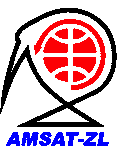 AmsatZL KiwiSAT
AmsatZL KiwiSAT
This looks promising, linear transponder, FM, 2 meter, 70 centimetre and 23 centimetre all in one small satellite made by AmsatZL. Accepted launch, may 2013.

 AmsatZL KiwiSAT
AmsatZL KiwiSAT
This looks promising, linear transponder, FM, 2 meter, 70 centimetre and 23 centimetre all in one small satellite made by AmsatZL. Accepted launch, may 2013.
FUNcube Dongle Pro+ Arrived
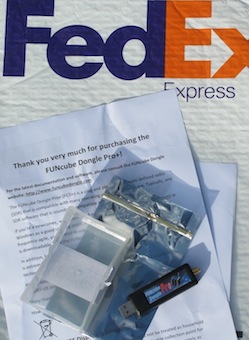 Yesterday I received the new FUNCube in the mail, It all looks very neat and Howard has left nothing to chance to deliver the SDR receiver in the right way. It is shipped in a professional manner, better than many companies.
Yesterday I received the new FUNCube in the mail, It all looks very neat and Howard has left nothing to chance to deliver the SDR receiver in the right way. It is shipped in a professional manner, better than many companies.
In the evening I finally had some time to test this FUNcube, it turned out that during the test there were tropo conditions and that explained why there were so many stations visible on the 192 khz bandwidth in the 2 metre band.
I did a quick scan of the AIR, 2m and 70cm band and it is immediately apparent that we are dealing with a better SDR receiver than the first version. In the next couple of days I will spend more time with the FUNCube and add some experiences to this blog.
One thing though was amazing, I could received FO-29 beacon and the whole transponder passband on a vertical antenna, this had not worked previously.
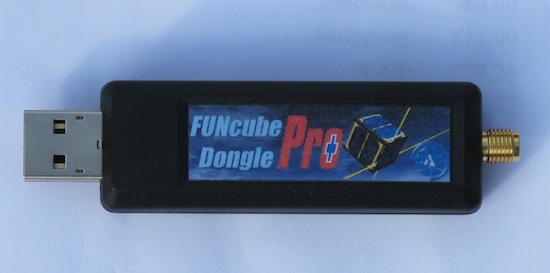
Specifications:
My current SDR setup, FUNcube dongle pro+, Diamond X5000 vertical, SDRSharp development version, high quality 2.5m USB cable and Windows 7 64bit.
Homepage and other references:
FUNcube dongle Pro+ website.
SDRSharp software.
The last prism mission is now active. This is specially for Ham radio operators. PRISM’s downlink has been received among amateur radio operators since the launch of PRISM. This HAM Radio Service allows amateur radio operators to uplink messages to PRISM as well as downlink messages from PRISM. In other words, amateur radio operators can use PRISM as a message box.
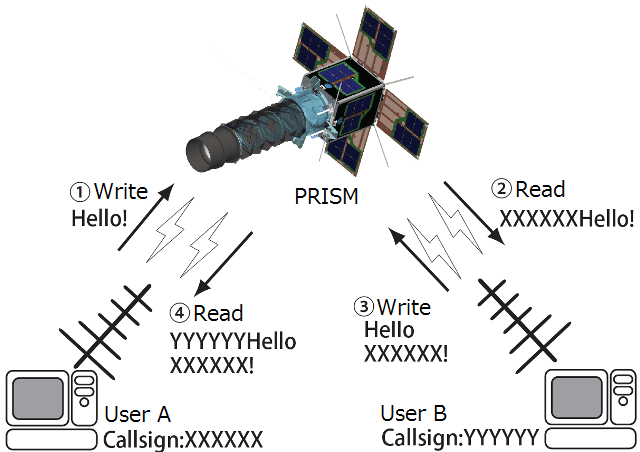
In this HAM Radio Service, you can write messages onto PRISM’s on-board memory via FM packets uplink. Also you can command PRISM to downlink the stored messages in FM packets. Thus, PRISM can be used as a kind of message box. Also, you can evaluate FM packets performance of your ground station designed for amateur radio satellites.
The followings are three commands you can use:
Homepage and other references:
Prism Ham service website.
Problems with AO-27 (Eyesat)
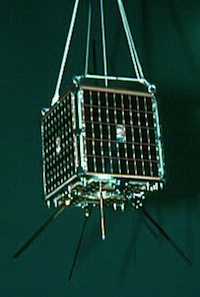
On Oct 5, 2012 AO-27 went off-line and the ground station team is trying to recover the Satellite. The attempt failed and at the moment the ground crew is in the middle of a new attempt to get AO-27 operational again. All the information can be found on the AO-27 website. The last news from Oct, 18th gives us the following information:
We tried to do a restart of the high level code today which did not work out. We left the transmitter on to drain the batteries in hopes of clearing any latch ups. On the next pass, we could turn the bird back on so it survived the battery draining. The modem problem was back and we got that cleared. Its back up on the secondary bootloader.
[PE0SAT Thanks N3UC for the above information]
Homepage and other references:
AO-27 website.
Kepler (TLE) data for the ISS/JAXA cubesat launch
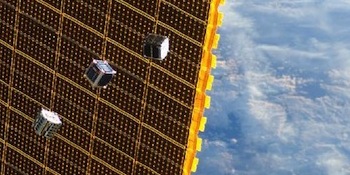 The TLE of the five CubeSats recently launched from ISS are now available with the NORAD registration numbers 1998-067-CN, CP, CQ, CR, CS. 1998 ? Yes as NORAD considers they are parts of the ISS, the first module of which, Zarya, was launched on November 20th 1998 and got the NORAD registration number 1998-067-A.
The TLE of the five CubeSats recently launched from ISS are now available with the NORAD registration numbers 1998-067-CN, CP, CQ, CR, CS. 1998 ? Yes as NORAD considers they are parts of the ISS, the first module of which, Zarya, was launched on November 20th 1998 and got the NORAD registration number 1998-067-A.
(J-P/F5YG wrote on amsat-bb) Yesterday evening (Western Europe, around 2130 UTC), I noticed that FITSAT-1 was already about 4 mn before the ISS predictions as this one modified altitude (higher). With a max. elevation angle of 83 deg., we received the 437.250 MHz beacon loud and clear.
1998-067CN 1 38852U 98067CN 12283.00925092 .00041863 00000-0 69687-3 0 14 2 38852 51.6477 275.8145 0018909 135.8738 224.3701 15.51407904 603 1998-067CP 1 38853U 98067CO 12283.00919217 .00038394 00000-0 64119-3 0 17 2 38853 51.6480 275.8141 0014227 145.1302 215.0858 15.51445930 661 1998-067CQ 1 38854U 98067CP 12283.07336473 .00054398 00000-0 89879-3 0 14 2 38854 51.6473 275.4897 0014651 145.1372 215.0744 15.51582271 671 1998-067CR 1 38855U 98067CQ 12282.68697989 .00022010 00000-0 37095-3 0 12 2 38855 51.6485 277.4123 0014736 146.6828 213.5108 15.51493630 504 1998-067CS 1 38856U 98067CR 12283.00883489 .00069724 00000-0 11405-2 0 11 2 38856 51.6479 275.8106 0018733 136.2088 224.0323 15.51677880 557
We-Wish, RAIKO, FITSat-1, F1 and TechEdSat.
Update: October 10, 2012 from PA0DLO via Amsat-BB
PA0DLO wrote on Amsat-BB: FITSAT-1 is object 38853, 1998-067CP
DK3WN wrote on Amsat-BB: TechEdSat is object 38854, 1998-067CQ and We-Wish is object 38856, 1998-067CS
TLE data on October 11th, 2012 gives:
FITSAT-1 1 38853U 98067CP 12284.23299041 .00046535 00000-0 77118-3 0 41 2 38853 51.6484 269.7387 0014904 153.8209 206.3540 15.51562650 854 TechEdSat 1 38854U 98067CQ 12284.23265201 .00051303 00000-0 84491-3 0 33 2 38854 51.6480 269.7331 0014412 150.5036 209.6797 15.51702475 857 We-Wish 1 38856U 98067CS 12284.23242654 .00070920 00000-0 11526-2 0 58 2 38856 51.6470 269.7301 0018337 140.3610 219.8733 15.51859653 742
[PE0SAT Thanks DK3WN, J-P/F5YG, PA0DLO and amsat-bb for the above information]
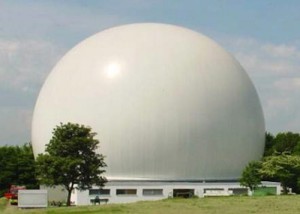 13 Oktober 2012
13 Oktober 2012
AMSAT-DL Symposium 2012
im Radom des IUZ
Blankensteiner Straße 200a
44797 Bochum Germany
Program:
| Time CEST | Vortag |
| 10:00 – 11:00 | Mike Rupprecht, DK3WN – Neues von den “Kleinen” und seine Arbeit als Satellitenkoordinator für die IARU |
| 11:00 – 12:00 | William Leijenaar, PA1RAH – Transpondertechnik für Cubesats |
| 12:00 – 13:00 | Mario Lorenz, DL5MLO – Neues von STEREO und erstes privates Weltraumteleskop MPST |
| 13:00 – 14:00 | Mittagspause (Imbiss vor Ort) |
| 14:00 – 16:00 | Mitgliederversammlung der AMSAT Deutschland e.V. – Gäste sind herzlich willkommen!
|